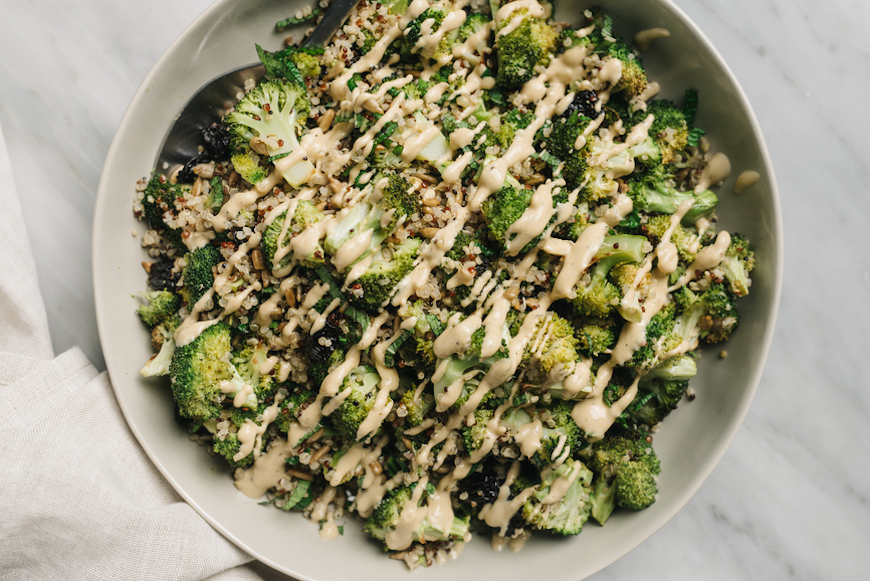
March 12, 2020 at 11:00PM by CWC
When cauliflower versions of rice, pizza crust, and gnocci first entered the food scene, it was downright revolutionary. After all, we’re all on a never-ending quest for more fiber, right? But healthy eaters are always on the hunt for the Next Big Thing. And what’s next is broccoli, a cousin of cauliflower and a fellow cruciferous veggie. Broccoli is getting the same treatment as cauliflower, morphing into rice, crusts, and tots. But in the battle of broccoli vs. cauliflower, which is the healthier choice?
“I think I’m ready for a change! Both have a lot of nutritional benefits to bring to the table, but I’m ready for a change in color,” says Melissa Rifkin, RD.
Before getting into the key differences between the two veggies, it’s worth pointing out the benefits they have in common. Both broccoli and cauliflower have about 2 grams of fiber per cup. And if you’re counting carbs, each contains roughly 5 grams per cup (cauliflower has slightly more than broccoli, but not by much). Both have the same amount of iron and magnesium, too.
Here’s where things get interesting: “Broccoli is rich in calcium, vitamin A, C, and K. But cauliflower does not contain vitamin A,” says Rifkin. While cauliflower does have a decent amount of calcium (23 grams per cup), it’s less than the amount in broccoli (35 grams per cup). Similarly, cauliflower does contain vitamin C, but it has a lower amount than broccoli. “Broccoli also has phytonutrients and polyunsaturated fatty acids,” says Rifkin. On the other hand, cauliflower is more hydrating. One serving has 98 grams of water, compared to broccoli’s 68 grams. Cauliflower is also high in folate, with 61 micrograms a serving as compared to broccoli’s 49 micrograms.
ADVERTISEMENT
ADVERTISEMENTKate Spade Autumn/Winter Sale |
Taking all of this into consideration, Rifkin says that no matter which one you choose, your body will benefit—there’s no loser here. Personally, she’s Team Broccoli all the way. “With spring right around the corner, let’s add in more color—green!—and fiber to our lives,” she says. And just a casual stroll around the grocery store will show you that it’s easier than ever to do just that.
Twelve vegetables you need to buy organic (and 15 you don’t):
Here’s how to add more fiber to your diet without overloading your digestive system. Plus, fiber isn’t just good for your gut—here’s how it benefits your hair and nails, too.
Author Emily Laurence | Well and Good
Selected by CWC

ADVERTISEMENT
ADVERTISEMENTUp to 30% off Gift Sets |







